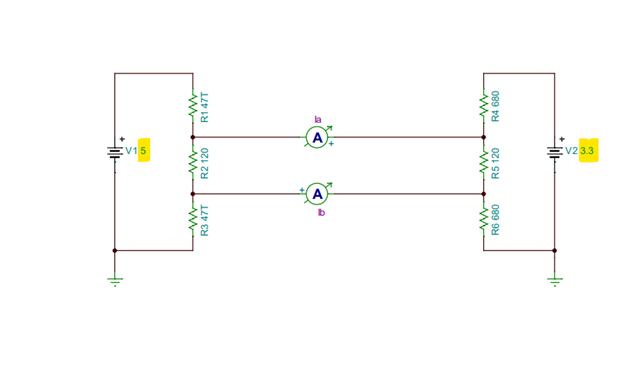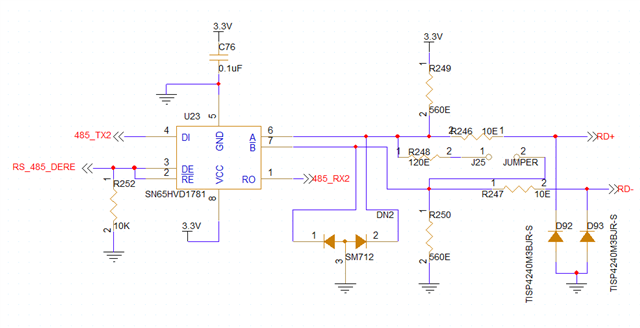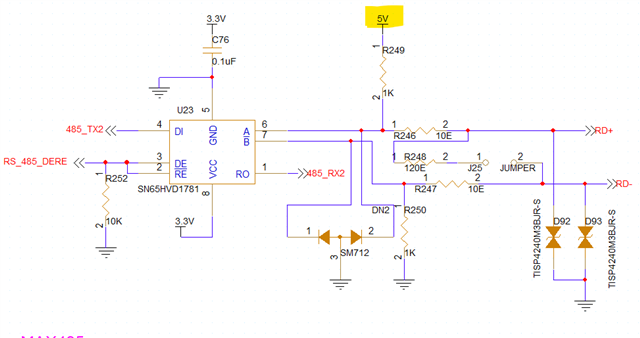Other Parts Discussed in Thread: ESDS552
Tool/software:
Hi Team,
We are currently operating our RS-485 bus at 3.3 V and would like to clarify the following regarding the reserved, unpopulated pull-up and pull-down resistors:
-
Resistor Values When Unpopulated:
-
What are the recommended resistor values for the unpopulated pull-up (R7) and pull-down (R6) resistors?
-
-
Idle Voltage Levels:
-
What are the expected idle voltage levels on lines A and B?
-
-
VCM_A and VCM_B Voltage Levels:
-
What should the voltage levels be for VCM_A and VCM_B?
-
-
Resistor Values for VCM_A (3.3 V) and VCM_B (GND):
-
If VCM_A is set to 3.3 V and VCM_B is tied to GND, what should the values of R6 and R7 be for a 1.2 km bus length?
-
-
Termination Resistor (120 Ω):
-
Under what conditions is the 120 Ω termination resistor required?
-
Thank you for your support in clarifying these points. Please let me know if you need any additional details.




